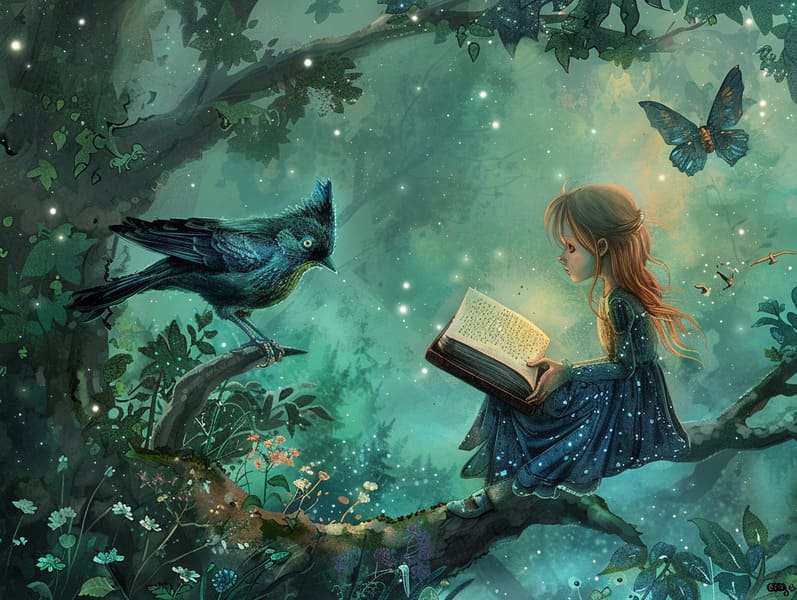The Genesis of Online Fairy Tales and Its Everlasting Mystique.
The Genesis of Online Fairy Tales and Its Everlasting Mystique.
Blog Article

Fairy tales for kids have historical significance. These tales have been transmitted from one generation to the next well before they were ever written down. They came from a variety of cultures, including Indigenous traditions. They were initially passed along among mature audiences, often carrying themes and messages reflective of the societal norms and beliefs of the time.
The famous Grimm duo, the two Grimm brothers, were among the first to gather many of these beloved fairy tales. Their collection, "Grimm's Fairy Stories," included tales like "The True Bride," "The Bread Crumb Trail," and "Snow-White and Rose-Red," which have since become cornerstones in the world of timeless fairy tales. Similarly, Hans Christian Andersen's delightful narratives, such as "The Little Mermaid," and "The Duckling's Story," have floated into hearts worldwide, establishing their place in the pantheon of beloved fairy tales.
Though they are centuries old, classic fairy tales remain as relevant as ever, especially as children's bedtime stories. These enchanting tales are now available in different formats, including vibrantly illustrated books, whimsical animations, and digital storybooks.
Their unwavering allure can be connected to several delightful features:
Vital Lessons: Traditional fairy tales often provide important moral lessons. Tales like "The Tale of the Boy Who Cried Wolf" teach the significance of integrity, while "The Tortoise and the Hare" illustrate the virtues of steadfastness and modesty. These tales offer young readers clear distinctions between moral and immoral, shaping their moral compass in a soft yet meaningful way.
Empathy and Awareness: Traditional fairy tales frequently portray beings facing trials and tribulations, inspiring listeners to relate with their struggles and celebrate their triumphs. For instance, "Beauty's Beast" teaches us the virtue of looking beyond appearances to perceive the true essence of a soul, fostering warmth and appreciation.
Cultural Comprehension: Many ancient fairy tales are deeply ingrained in the cultural contexts from which they grew. Exploring these tales can provide delightful insights into different societies, enhancing a sense of world insight and knowledge.
Imagination and Creativity: The supernatural elements in timeless fairy tales—magical beings—ignite children’s imaginative ideas. These stories take readers to fantasy realms, fostering fantasy dreams and a sense of curiosity that remains a lifetime.
Traditional fairy tales are not only spellbinding but also edifying. They act as charming tools in building various cognitive and affective skills in kids. When classic fairy tales are recited, they boost language development by offering new word meanings and complex sentence structures. This practice also cultivates listening skills and mental focus, as the young focus on every detail, looking forward to see what happens next.
Furthermore, exploring the themes and characters of old fairy tales can nurture intellectual skills and evaluative skills. The young are shown to recognize patterns, make predictions, and know cause and effect. These debates also boost the young express their thoughts and feelings, nurturing their emotional intelligence.
In today’s electronic age, the accessibility of online storybooks has made these fairy tales more accessible than ever. Online resources and online apps extend wide arrays of timeless fairy tales that can be read or played anytime, anywhere. Fairy find it here tales told out loud are particularly well-liked, sharing an enjoyable way for young ones to relish these charming stories. Read-aloud books and read-aloud videos guide characters and settings to life, often accompanied by whimsical sound effects and music that enhance the storytelling experience.
The unending appeal of old fairy tales lies in their ability to alter to the present while continuing with their core values. Contemporary adaptations of these stories often present more inclusive protagonists and modern settings, making them accessible to today’s audience. However, the fundamental themes of boldness, goodness, and fair play remain unchanged, continuing to strike a chord with kids of all ages.
Fairy tales also offer a sense of contentment and knownness. They bestow a ordered narrative with a unmistakable beginning, middle, and end, often concluding with the ending of conflicts and the triumph of honesty over deceit. This constancy can be comforting for little ones, affording a sense of dependability in an inconstant world.
Timeless fairy tales continue to enchant and guide new generations, maintaining their allure and applicability in modern society. As children's night stories, they afford a perfect blend of enchantment and education, backing moral values, empathy, and creativity. The abundance of online fairy tales and the widespread nature of fairy tales read aloud assure that these timeless tales remain available to new generations.
By holding onto and recounting these fairy tales, we continue to value the rich tapestry of folklore and cultural heritage. Whether you are accessing a colorful picture book, experiencing a internet library, or hearing an spoken story, the elegance of traditional fairy tales is always within reach. These tales teach us of the consistent nature of fairy tales and its ability to connect us across generations and cultures.
Be it you are reading a beautifully illustrated book, perusing a electronic collection, or listening through an voice book, the allure of timeless fairy tales is always within reach.
These stories point out of the continued strength of storytelling and its ability to connect us across time and space, forging a link that delights and instructs alike.